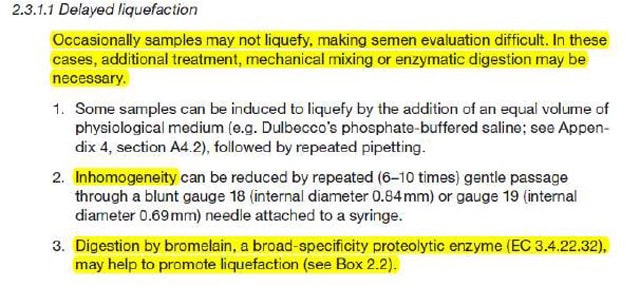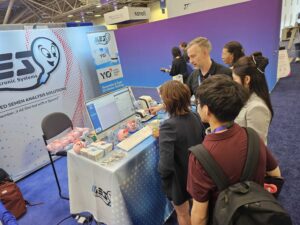Issue date: Monday, November 26, 2012
Attn: All SQA-V /QwikCheck™GOLD (WHO 4th & 5th compliant software)
Background:
The WHO 5th edition manual (page 13) describes the semen liquefaction as follows:
“Immediately after ejaculation into the collection vessel, semen is typically a semi-solid coagulated mass. Within a few minutes at room temperature, the semen usually begins to liquefy (become thinner), at which time a heterogeneous mixture of lumps will be seen in the fluid. As liquefaction continues, the semen becomes more homogeneous and quite watery, and in the final stages only small areas of coagulation remain. The complete sample usually liquefies within 15 minutes at room temperature, although rarely it may take up to 60 minutes or more. If complete liquefaction does not occur within 60 minutes, this should be recorded.”
WHO 5th describes high viscosity and the effect on semen parameters (page 15):
“High viscosity can interfere with determination of sperm motility, sperm concentration, detection of antibody-coated spermatozoa and measurement of biochemical markers.”
Further, WHO 5th describes Delayed Liquefaction (on page 14):

Information:
According to the WHO 5th edition manual, highly viscous or incompletely liquefied semen samples should be treated in order to reduce their viscosity which can interfere with the accuracy of the reported semen parameters. The methods for treating high viscosity or incompletely liquefied samples differ. The most effective method is limited proteolysis by broad-specificity proteolytic enzymes like bromelain or α-chymotrypsin (QwikCheck™Liquefaction Kit).
In order to provide a complete description of the sample and any additives for the physician, the SQA-V has an entry concerning the nature of the sample LIQUEFACTION and VISCOSITY that should be assessed and entered prior to the sample treatment (see below patient / sample data entry screen).



